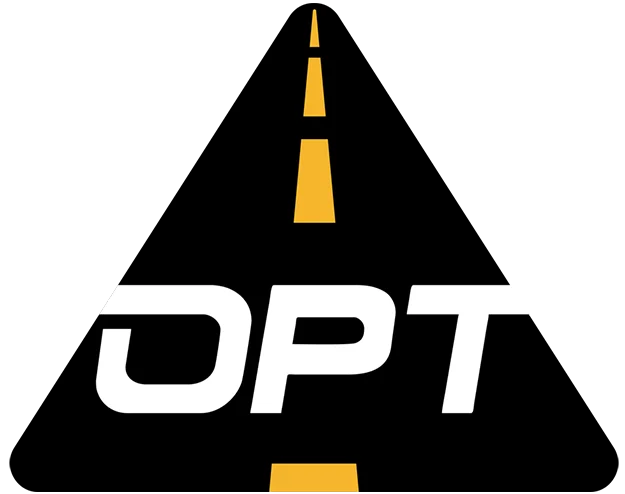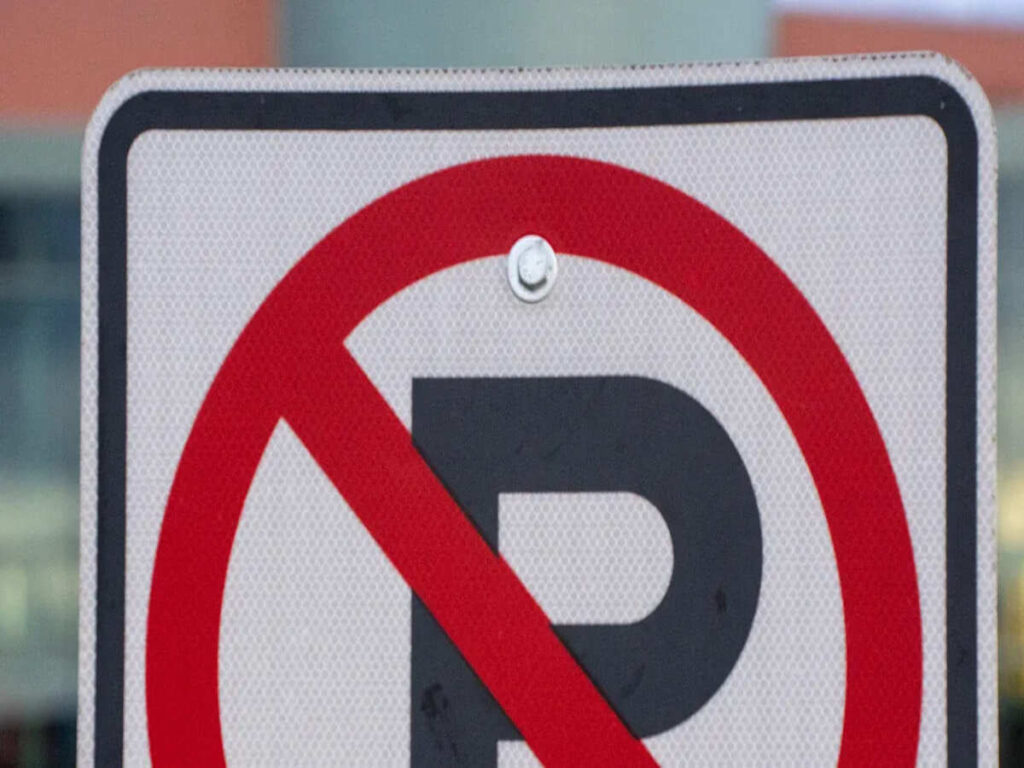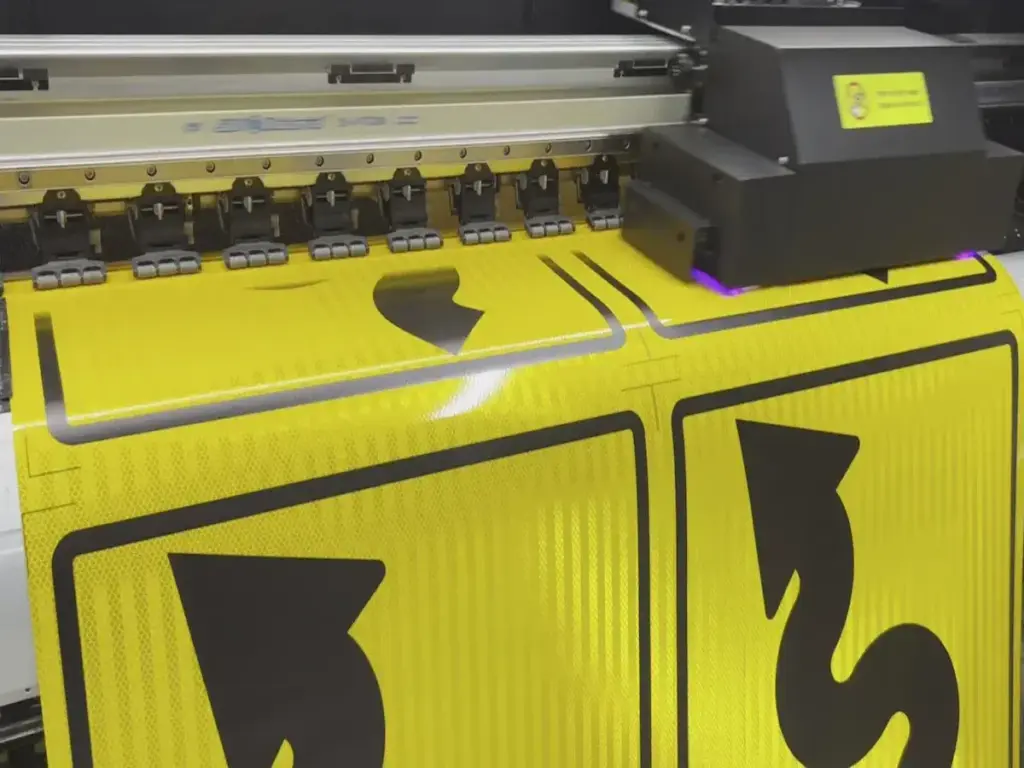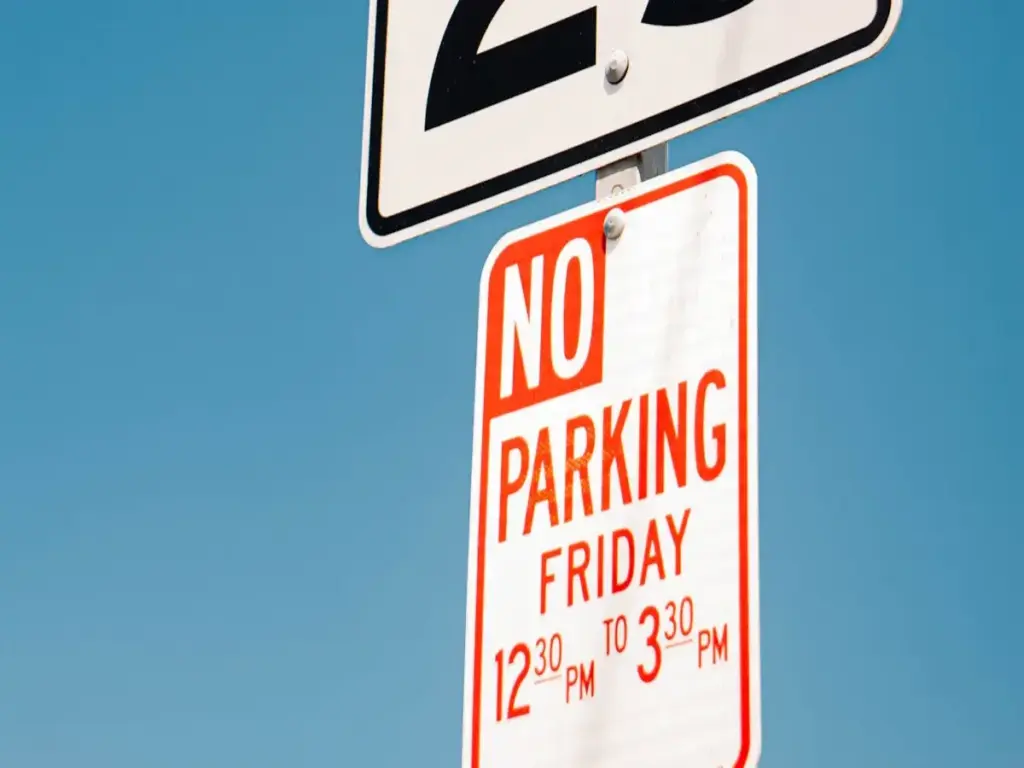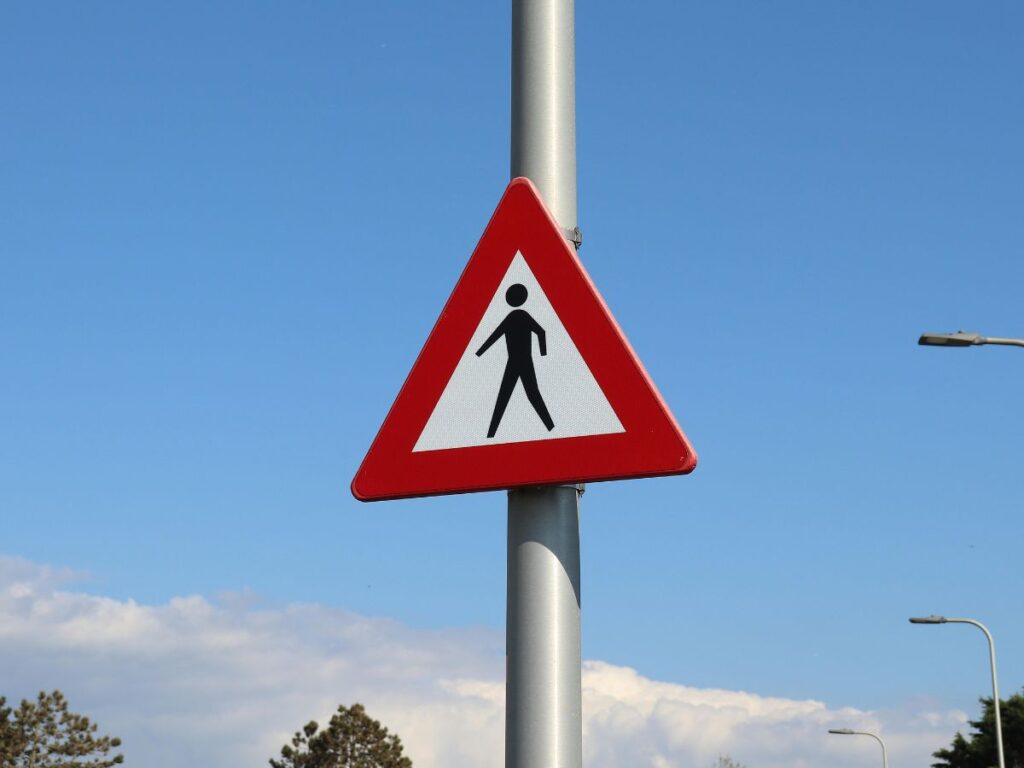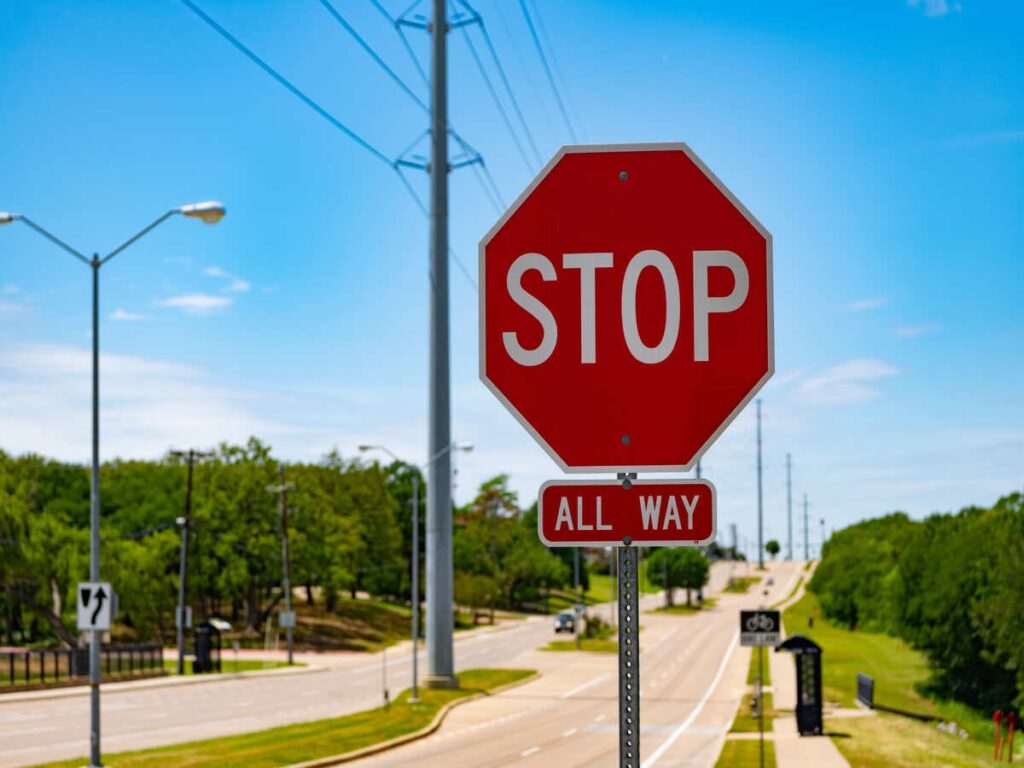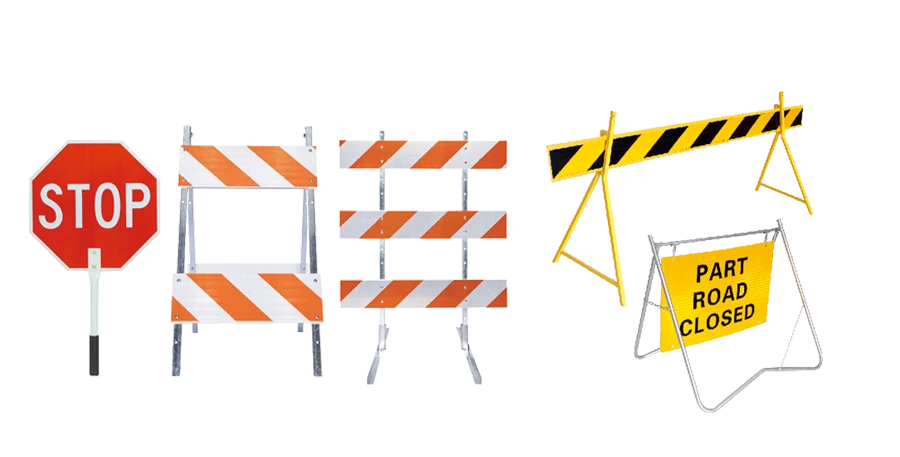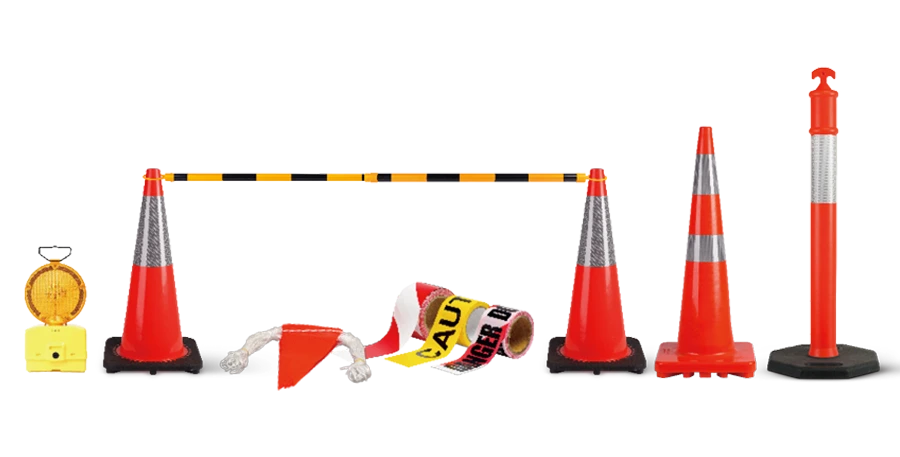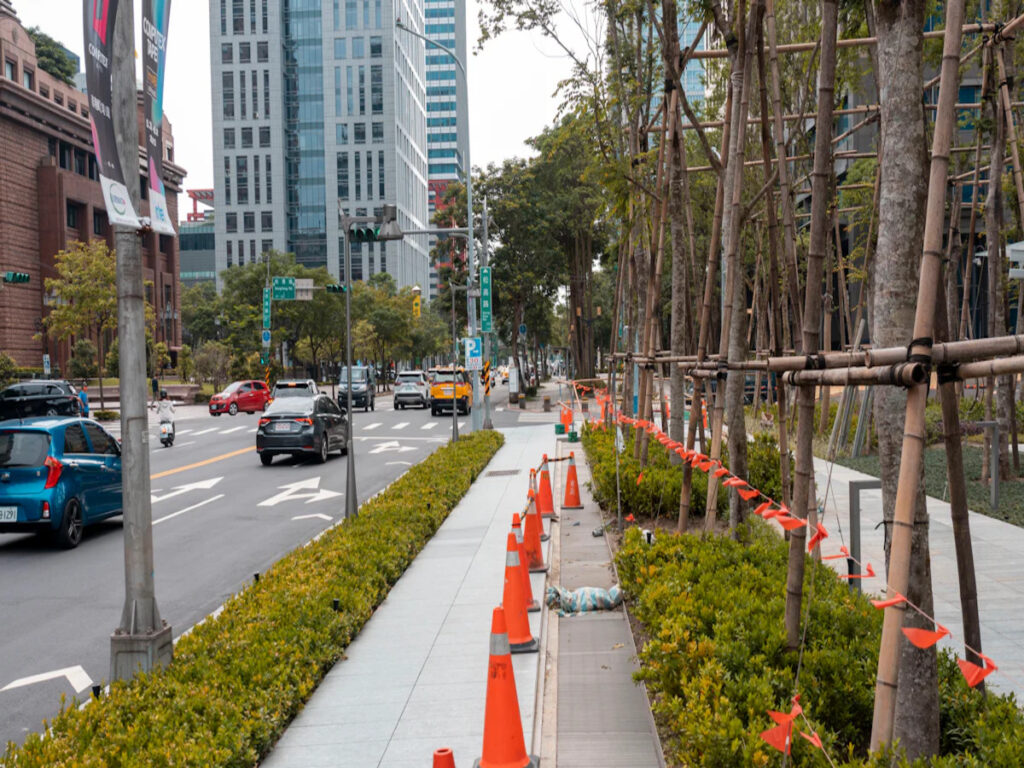
Große Straßenkegel spielen eine wichtige Rolle bei der Schaffung sichererer Stadtteile. Ihre hohe Sichtbarkeit hilft Ihnen, den Verkehr effektiv zu verwalten und Fußgänger vor potenziellen Gefahren zu schützen. Sie können sie verwenden, um Fahrzeuge zu führen und Grenzen zu markieren, Gewährleistung einer reibungslosen Mobilität in geschäftigen Bereichen. Diese hohen Leitkegel passen sich verschiedenen Situationen an, Sie ideal für vorübergehende und dauerhafte Setups ideal machen. In Gemeinschaftsräumen, Sie verbessern die Sicherheit, indem sie die Zonen für Fußgänger und Fahrzeuge klar definieren. Durch strategisch hohe Straßenkegel platzieren, Sie tragen zu einer sichereren und organisierten Umgebung für alle bei.
Einführung
Überblick über die Entwicklung der Gemeindenachbarschaften
Gemeindeentwicklung konzentriert sich auf die Schaffung von Räumen, die den Bedürfnissen der Bewohner gerecht werden und gleichzeitig Sicherheit und Mobilität fördern. Man kann es sich als ein Gleichgewicht zwischen Funktionalität und Wohnlichkeit vorstellen. Mehrere Schlüsselkomponenten prägen diesen Prozess:
- Barrierefreie öffentliche Räume fördern soziale Interaktionen und Freizeitaktivitäten. Diese Räume reduzieren die Notwendigkeit einer Autofahrt, indem sie nahegelegene Annehmlichkeiten bieten.
- Die gemischt genutzte Siedlung integriert Wohn- und Gewerbegebiete. Diese Einrichtung fördert das Gehen und Radfahren, Verringerung der Verkehrsstaus.
- Nachhaltiges Design minimiert die Umweltbelastung und unterstützt einen gesünderen Lebensstil. Es beeinflusst auch die Transportwahl, indem es umweltfreundliche Optionen fördert.
- Effektive Transportsysteme bieten vielfältige Mobilitätsmöglichkeiten. Diese Systeme verringern die Abhängigkeit vom Auto und verbessern die allgemeine Konnektivität.
- Das Engagement der Gemeinschaft stellt sicher, dass die Entwürfe die Bedürfnisse der Bewohner widerspiegeln. Diese Einbindung trägt dazu bei, Verkehrsmuster zu schaffen, die mit den lokalen Prioritäten übereinstimmen.
Indem Sie sich auf diese Elemente konzentrieren, Sie können sichere Nachbarschaften schaffen, effizient, und angenehm für alle.
Die Rolle von Leitkegeln bei der Nachbarschaftsgestaltung
Leitkegel spielen bei der Quartiersgestaltung eine entscheidende Rolle. Sie helfen Ihnen, den Verkehrsfluss zu steuern und in verschiedenen Situationen für Sicherheit zu sorgen. Hohe Straßenkegel, insbesondere, zeichnen sich durch eine hohe Sichtbarkeit aus. Sie können damit Grenzen markieren, Führungsfahrzeuge, oder temporäre Fußgängerzonen schaffen.
In gemischt genutzte Stadtteile, Diese hohen Straßenkegel helfen dabei, Bereiche für verschiedene Aktivitäten abzugrenzen. Zum Beispiel, Sie können Radwege vom Fahrzeugverkehr trennen oder Zebrastreifen für Fußgänger hervorheben. Aufgrund ihrer Anpassungsfähigkeit sind sie sowohl für kurzfristige als auch für langfristige Projekte unverzichtbar.
Leitkegel erleichtern auch die Organisation bei Bauarbeiten oder Gemeindeveranstaltungen. Sie liefern klare visuelle Hinweise, Verwirrung reduzieren und die Sicherheit verbessern. Indem Sie sie in Ihre Designpläne integrieren, Sie können Mobilitätsprobleme bewältigen und gleichzeitig Bewohner und Besucher schützen.
Wichtige Gestaltungsprinzipien für die Entwicklung von Gemeindevierteln
Verkehrsfluss und Fußgängersicherheit in Einklang bringen
Das Gleichgewicht zwischen Verkehrsfluss und Fußgängersicherheit ist bei der Nachbarschaftsgestaltung von entscheidender Bedeutung. Dies können Sie erreichen, indem Sie Strategien umsetzen, die die Bedürfnisse aller Verkehrsteilnehmer in den Vordergrund stellen. A Komplette Streets-Richtlinie sorgt dafür, dass Straßen für alle zugänglich und sicher sind, einschließlich Fußgänger, Radfahrer, und Treiber. Programme wie Sichere Routen to School schützt Kinder, indem es sicherere Wege zum Gehen und Radfahren schafft. Auch der Umgang mit unkontrollierten Kreuzungen mit klaren Markierungen oder Signalen kann die Risiken für gefährdete Verkehrsteilnehmer verringern.
Wenn Sie Straßen nach diesen Grundsätzen entwerfen, Sie schaffen eine Umgebung, in der Mobilität und Sicherheit nebeneinander bestehen. Enge Gassen und Einbahnstraßen kann Fahrzeuge verlangsamen, Straßen für Fußgänger sicherer machen. Fahrradeinrichtungen hinzufügen, wie zum Beispiel spezielle Radwege, kann die Sicherheit weiter erhöhen und gleichzeitig den Verkehrsfluss verbessern. Diese Maßnahmen schützen nicht nur Fußgänger, sondern fördern auch ihre Gesundheit, nachhaltigeres Reiseverhalten.
Integration von gemischt genutzten Zonen- und Transportanforderungen
Die gemischt genutzte Zoneneinteilung spielt eine entscheidende Rolle bei der Schaffung lebendiger Räume, funktionale Nachbarschaften. Durch die Integration von Wohnraum, kommerziell, und Erholungsräume, Sie reduzieren die Notwendigkeit langer Arbeitswege. Dieser Ansatz senkt die kombinierten Wohn- und Transportkosten für Haushalte. Es fördert auch einen gesünderen Lebensstil, indem es das Gehen und Radfahren als Teil der täglichen Routine fördert.
Um den Transportbedarf zu decken, Sie können Quartiere mit vielfältigen Mobilitätsmöglichkeiten gestalten. Bereitstellen Fahrradeinrichtungen und fußgängerfreundliche Wege stellt sicher, dass Menschen Alternativen zum Autofahren haben. Im Laufe der Zeit, Dadurch entsteht ein nachhaltigeres Transportsystem. Die Zoneneinteilung mit gemischter Nutzung verbessert auch die Konnektivität, Dies erleichtert den Bewohnern den Zugang zu wichtigen Dienstleistungen, ohne ausschließlich auf Fahrzeuge angewiesen zu sein.
Sichere und begehbare Straßen schaffen
Sichere und fußgängerfreundliche Straßen sind das Rückgrat jeder gut gestalteten Gemeinde. Sie können Straßen und Gehwege anpassen, um Fußgängern entgegenzukommen, Radfahrer, und Fahrzeuge, Konflikte reduzieren und die Sicherheit erhöhen. Funktionen wie Countdown-Signale für Fußgänger und verkehrsberuhigende Designs verbessern die Sicherheit für alle Benutzer. Eine ordnungsgemäße Parkraumbewirtschaftung unterstützt die Gehbarkeit, indem sie die Bedürfnisse von Fahrern und Fußgängern in Einklang bringt.
Um Straßen einladender zu gestalten, Sie können Bäume entlang von Gehwegen pflanzen. Bäume spenden nicht nur Schatten, sondern bilden auch eine natürliche Barriere zwischen Fußgängern und Fahrzeugen. Die Förderung des Radfahrens auf speziellen Fahrspuren kann die Geschwindigkeit von Autos verlangsamen, Straßen für alle sicherer machen. Diese Elemente wirken zusammen und schaffen eine Gemeinschaft, in der Wandern und Radfahren angenehme und praktische Optionen sind.
Anpassung an den lokalen Landnutzungskontext
Durch die Anpassung an den lokalen Landnutzungskontext wird sichergestellt, dass Ihr Nachbarschaftsdesign mit den einzigartigen Merkmalen des Gebiets übereinstimmt. Jede Community hat unterschiedliche Merkmale, wie etwa die Bevölkerungsdichte, kulturelle Vorlieben, und bestehende Infrastruktur. Sie können eine funktionellere und harmonischere Umgebung schaffen, indem Sie Ihr Design auf diese Faktoren abstimmen.
Beginnen Sie mit der Beurteilung der Landnutzungsmuster in Ihrer Region. Wohngebiet identifizieren, kommerziell, und Erholungszonen. Dies hilft Ihnen zu verstehen, wie Menschen mit ihrer Umgebung interagieren. Zum Beispiel, in dicht besiedelten Gebieten, Priorisieren Sie Fußgängerwege und öffentliche Verkehrsmittel. In Vorstadtvierteln, Der Schwerpunkt liegt auf der Schaffung sicherer Übergänge und gemeinsamer Räume für Fahrzeuge und Fußgänger.
Bedenken Sie das natürliche Landschaft bei der Planung Ihres Designs. Erhalten Sie Grünflächen und integrieren Sie diese in Ihre Gestaltung. Parks und von Bäumen gesäumte Straßen verbessern nicht nur die Ästhetik, sondern verbessern auch die Luftqualität und bieten Freizeitmöglichkeiten. Diese Funktionen machen Ihre Gemeinde lebenswerter und nachhaltiger.
Nehmen Sie Kontakt zu den Anwohnern auf, um mehr über ihre Bedürfnisse und Vorlieben zu erfahren. Der Beitrag der Community stellt sicher, dass Ihr Design die Prioritäten der dort lebenden Menschen widerspiegelt. Zum Beispiel, wenn Bewohner Wert auf Gehfähigkeit legen, Sie können auf breite Gehwege und verkehrsberuhigende Maßnahmen Wert legen. Indem Sie Ihr Design an den lokalen Kontext anpassen, Sie schaffen eine Nachbarschaft, die Mobilität und Sicherheit effektiv in Einklang bringt.
Verbesserung der Konnektivität und Mobilität für alle Benutzer
Um die Konnektivität und Mobilität für alle Benutzer zu verbessern, muss ein Transportnetzwerk geschaffen werden, das allen gerecht wird. Dies können Sie erreichen, indem Sie sich auf die Fußgängersicherheit konzentrieren, Fahrradinfrastruktur, und Zugang zu öffentlichen Verkehrsmitteln.
- Design für Fußgängersicherheit mit deutlich gekennzeichneten Zebrastreifen und gut gepflegten Gehwegen. Diese Funktionen reduzieren Unfälle und fördern das Gehen als primäres Fortbewegungsmittel.
- Erweitern Sie Radwege und stellen Sie Fahrradständer bereit, um eine fahrradfreundliche Umgebung zu unterstützen. Dies fördert einen gesünderen Lebensstil und reduziert die Verkehrsstaus.
- Entwickeln Sie Mehrzweck-Verkehrsknotenpunkte, um Stadtteile mit öffentlichen Verkehrsmitteln zu verbinden. Diese Knotenpunkte erleichtern den Bewohnern den Zugang zu Bussen, Züge, oder andere gemeinsame Transportmöglichkeiten.
Um die Mobilität weiter zu verbessern, Integration von Transport- und Landnutzungsplanung. Lokalisieren Sie wichtige kommerzielle und institutionelle Zentren in zugänglichen Bereichen. Reduzieren Sie die Entfernungen zwischen wichtigen Zielen, um das Gehen oder Radfahren praktischer zu machen. Verbessern Sie die lokale Fußgänger- und Fahrradinfrastruktur an kritischen Zugangspunkten. Durch die Verwaltung des Transportsystems zur Minimierung der Reisezeiten wird auch die Konnektivität verbessert.
Durch die Umsetzung dieser Strategien, Sie schaffen eine Gemeinschaft, in der Mobilität nahtlos und inklusiv ist. Alle, von Fußgängern über Radfahrer bis hin zu Autofahrern, profitiert von einer gut vernetzten und durchdacht gestalteten Nachbarschaft.
Planung für funktionale Straßen in Wohn- und Gewerbegebieten
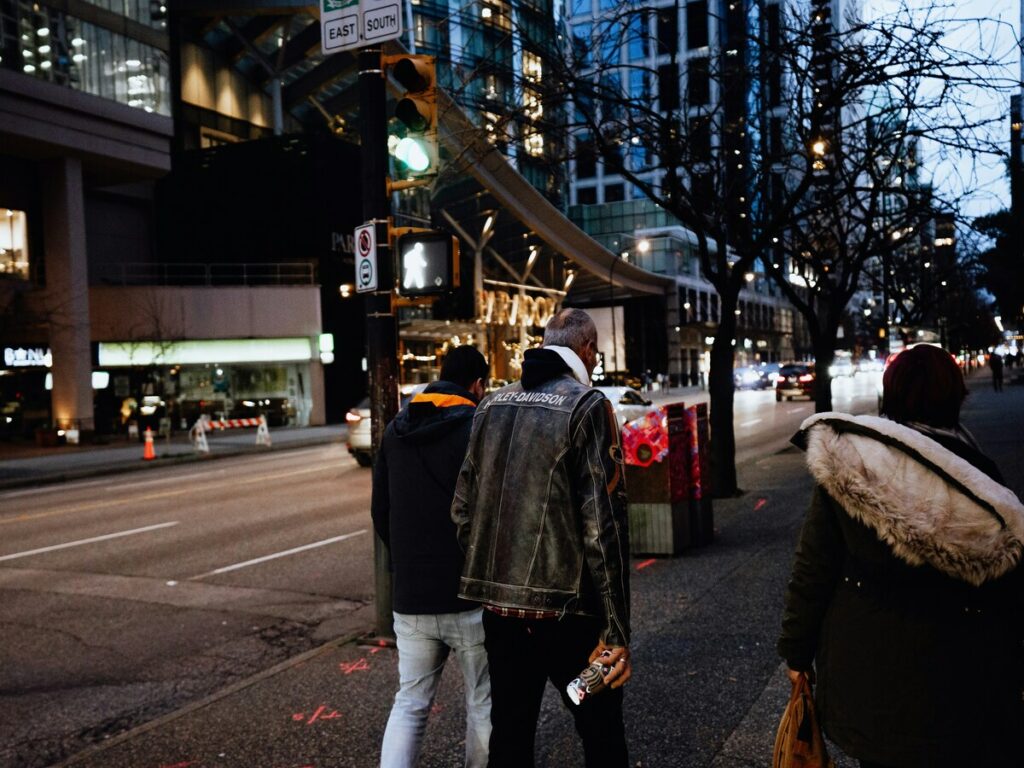
Straßen so gestalten, dass sie vielfältigen Anforderungen gerecht werden
Die Gestaltung von Straßen, die mehreren Anforderungen gerecht werden, erfordert einen durchdachten Ansatz. Straßen in Wohn- und Gewerbegebieten müssen den Autofahrern dienen, Fußgänger, und Radfahrer bei gleichzeitiger Gewährleistung der Sicherheit für alle. Dies können Sie erreichen, indem Sie Funktionen integrieren, die unterschiedliche Transportanforderungen erfüllen. Zum Beispiel, Das Hinzufügen von Fußgängereinrichtungen wie breiten Gehwegen und Zebrastreifen verbessert die Zugänglichkeit für Fußgänger. Die Einbeziehung von Fahrradeinrichtungen wie Radwegen und Fahrradständern fördert das Radfahren, Verringerung der Fahrzeugstaus.
In Gewerbegebieten, Straßen sollten Lieferfahrzeuge unterstützen, ohne den Verkehrsfluss zu stören. Sie können Ladezonen festlegen, um Abläufe zu optimieren und die Ordnung aufrechtzuerhalten. In Wohngebieten, Gemeinsame Räume können die Bedürfnisse von Fußgängern und Fahrzeugen in Einklang bringen. Diese Räume schaffen ein Gemeinschaftsgefühl, indem sie langsamere Geschwindigkeiten und sicherere Interaktionen fördern. Durch die Gestaltung von Straßen mit diesen Elementen, Sie verbessern die Mobilität und schaffen ein integrativeres Umfeld.
Priorisierung des sicheren Zugangs für Einsatz- und Servicefahrzeuge
Ein sicherer Zugang für Einsatz- und Servicefahrzeuge ist in jeder Nachbarschaft von entscheidender Bedeutung. Sie können dies priorisieren, indem Sie sicherstellen, dass die Straßen breit genug sind, um größere Fahrzeuge aufzunehmen. Klare Beschilderung und freie Wege helfen den Einsatzkräften, ihr Ziel schnell zu erreichen.
In Wohngebieten, Sackgassen und Sackgassen können für Einsatzfahrzeuge eine Herausforderung darstellen. Sie können dem entgegenwirken, indem Sie Abzweigungen einbauen oder Straßen verbinden, um die Erreichbarkeit zu verbessern. In Gewerbegebieten, Die Aufrechterhaltung freier Laderampen und Serviceeingänge gewährleistet einen effizienten Betrieb. Indem wir diese Bedürfnisse planen, Sie erhöhen die Sicherheit und sorgen dafür, dass wichtige Dienste reibungslos funktionieren.
Nachhaltige Straßengestaltung und Verkehrsberuhigungsmaßnahmen
Nachhaltiges Straßendesign verwandelt Straßen in sicherere und lebenswertere Räume. Sie können verkehrsberuhigende Maßnahmen einbauen, um Fahrzeuggeschwindigkeiten und -volumen zu reduzieren. Diese Maßnahmen erhöhen die Sicherheit für Fußgänger und Radfahrer und verbessern gleichzeitig die Mobilität aller Nutzer.
- Die Verkehrsberuhigung verbessert die Sicherheit und den Komfort von Nichtautofahrern.
- Es reduziert die Fahrzeuggeschwindigkeit, Straßen für Fußgänger und Radfahrer sicherer machen.
- Es steigert die Lebensqualität in der Stadt, Vorort-, und ländliche Viertel.
- Es ermöglicht allen Straßenbenutzern eine sichere und effiziente Fortbewegung.
Nachhaltige Straßengestaltung integriert auch grüne Infrastruktur. Elemente wie durchlässige Gehwege und Regengärten regulieren Regenwasser und verschönern gleichzeitig das Gebiet. Durch Übernahme dieser Praktiken, Sie schaffen Straßen, die Funktionalität und Umweltverantwortung in Einklang bringen.
Schaffung flexibler Räume für gemeinschaftliches Engagement
Flexible Räume spielen eine entscheidende Rolle bei der Förderung des gemeinschaftlichen Engagements. Diese Bereiche fördern soziale Interaktionen, Freizeitaktivitäten, und ein Zugehörigkeitsgefühl unter den Bewohnern. Sie können solche Räume so gestalten, dass sie sich an verschiedene Bedürfnisse anpassen, Dadurch werden sie für alle integrativer und funktionaler.
Öffentliche Räume wie Parks, Spielplätze, und Gemeindezentren dienen als Herzstück des Nachbarschaftslebens. Diese Bereiche sollen zugänglich bleiben, sicher, und gut gepflegt, um Bewohner anzulocken. Wenn Sie Räume schaffen, die vielfältige Aktivitäten ermöglichen, Sie steigern die Lebensqualität in Ihrer Gemeinde. Zum Beispiel, In einem Park können morgens Fitnesskurse stattfinden, Familienpicknicks am Nachmittag, und kulturelle Veranstaltungen am Abend.
Flexible Räume wirkungsvoll gestalten, Beachten Sie die folgenden Grundsätze:
- Zugänglichkeit und Inklusivität: Stellen Sie sicher, dass öffentliche Räume von Personen jeden Alters und jeder Fähigkeit genutzt werden können. Breite Wege, Rampen, und Sitzbereiche machen diese Räume für alle einladend.
- Grünflächen und Naturintegration: Bäume einbeziehen, Gärten, und natürliche Elemente zur Verbesserung der Ästhetik und zur Förderung der ökologischen Nachhaltigkeit. Diese Funktionen bieten auch Schatten- und Entspannungsbereiche.
- Multifunktionale Räume: Gestalten Sie Bereiche, in denen eine Vielzahl von Aktivitäten und Veranstaltungen stattfinden können. Zum Beispiel, Ein Gemeindezentrum mit beweglichen Möbeln kann von einem Besprechungsraum in ein Yoga-Studio oder eine Kunstgalerie verwandelt werden.
Tipp: Flexible Räume fördern nicht nur das gesellschaftliche Engagement, sondern steigern auch den Wert Ihrer Nachbarschaft. Die Bewohner fühlen sich stärker mit ihrer Umgebung verbunden und in sie investiert.
Sie können diese Räume auch nutzen, um die Bindungen in der Gemeinschaft zu stärken. Organisieren Sie Veranstaltungen wie Bauern’ Märkte, Filmabende im Freien, oder Kulturfestivals. Diese Aktivitäten bringen Menschen zusammen und schaffen Möglichkeiten für sinnvolle Interaktionen. Indem Sie der Flexibilität bei der Gestaltung Ihrer Nachbarschaft Priorität einräumen, Sie bauen eine lebendige und vernetzte Community auf.
Implementierung von Leitkegellösungen in der Nachbarschaftsgestaltung
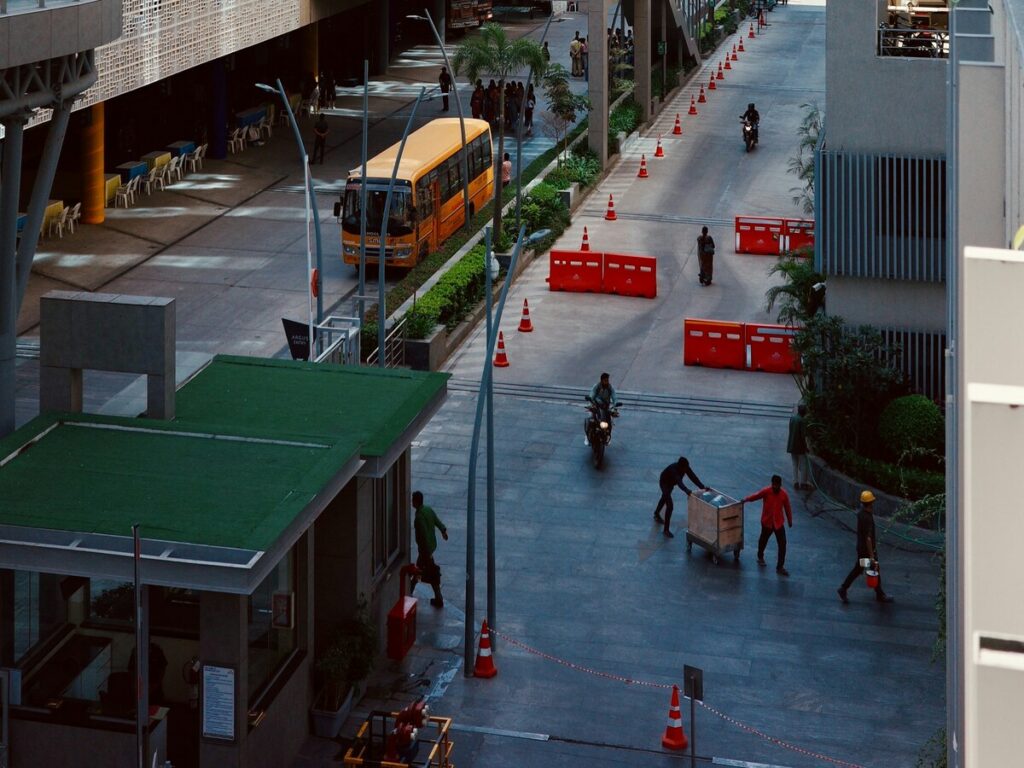
Strategische Platzierung von Leitkegeln in Hochrisikozonen
Die strategische Platzierung von Leitkegeln in Hochrisikozonen erhöht die Sicherheit und Organisation. Sie sollten hohe Leitkegel in Bereichen mit bester Sicht aufstellen, um sicherzustellen, dass sie von Autofahrern und Fußgängern wahrgenommen werden. Verwenden Sie sie, um Wege hervorzuheben, Markieren Sie eingeschränkte Zonen, oder Fahrzeuge effektiv führen. Zum Beispiel, Das Aufstellen hoher Leitkegel in der Nähe von Zebrastreifen oder Kreuzungen kann das Unfallrisiko verringern.
Vermeiden Sie die übermäßige Verwendung von Zapfen in einem Bereich. Zu viele hohe Leitkegel können zu Unordnung führen und die Verkehrsteilnehmer verwirren. Stattdessen, Konzentrieren Sie sich darauf, Hochleistungskegel an kritischen Stellen zu platzieren, an denen sie die größte Wirkung erzielen können. Dieser Ansatz stellt sicher, dass Ihre Nachbarschaft sicher und gut organisiert bleibt.
Kurzfristiger und langfristiger Einsatz von Leitkegeln
Leitkegel dienen sowohl kurzfristigen als auch langfristigen Zwecken bei der Nachbarschaftsgestaltung. Wenn Sie ihre Unterschiede verstehen, können Sie sie effektiv nutzen.
| Verwenden Sie den Typ | Beschreibung | Beispiele |
|---|---|---|
| Kurzfristig | Geeignet für vorübergehende Situationen, Wird häufig in dynamischen Umgebungen verwendet. | Bauzonen, Ereignisse |
| Langfristig | Entwickelt für dauerhaftere Installationen, sorgt für eine dauerhafte Verkehrskontrolle. | Wohngebiete, Parks |
Zu den kurzfristigen Einsatzmöglichkeiten gehört die Steuerung des Verkehrs während Bauarbeiten oder bei Gemeindeveranstaltungen. Diese Kegel bieten schnelle Lösungen für vorübergehende Bedürfnisse. Bei langfristigen Nutzungen geht es um die Schaffung dauerhafter Grenzen oder die Lenkung des Verkehrs in Wohngebieten. Zum Beispiel, Sie können hohe Leitkegel verwenden, um Radwege in Parks vom Fahrzeugverkehr zu trennen.
Durch das Verständnis dieser Anwendungen, Sie können die Wirksamkeit von Leitkegeln in Ihrer Nachbarschaft maximieren.
Verkehrskegel mit anderen Sicherheitsmaßnahmen kombinieren
Durch die Kombination von Leitkegeln mit anderen Sicherheitsmaßnahmen wird das Verkehrsmanagementsystem Ihrer Nachbarschaft gestärkt. Sie können Kegel mit reflektierenden Schildern kombinieren, um die Sichtbarkeit bei Nacht zu verbessern. Durch das Anbringen von Absperrungen oder Pollern neben Leitkegeln wird eine sicherere Abgrenzung für Fußgänger geschaffen.
In Schulzonen, Hohe Verkehrskegel funktionieren gut mit Bremsschwellen und Blinklichtern, um Kinder zu schützen. Für Baustellen, Hohe Leitkegel in Kombination mit Warnschildern und Barrikaden sorgen dafür, dass die Fahrer wachsam bleiben. Diese Kombinationen erhöhen die Sicherheit und verringern die Unfallwahrscheinlichkeit.
Durch die Verwendung von hohen Leitkegeln zusammen mit anderen Hilfsmitteln stellen Sie sicher, dass bei der Gestaltung Ihrer Nachbarschaft Sicherheit und Mobilität im Vordergrund stehen. Dieser integrierte Ansatz schafft eine sicherere Umgebung für alle.
Fallstudien zu Leitkegeln in realen Gemeinschaftsprojekten
Fallstudie 1: Verkehrsmanagement in gemischt genutzten Stadtteilen
In gemischt genutzten Stadtteilen, Leitkegel haben sich als unverzichtbar für die Aufrechterhaltung von Sicherheit und Organisation erwiesen. Diese Gebiete verbinden häufig Wohngebiete, kommerziell, und Erholungsräume, Dies schafft einzigartige Herausforderungen für das Verkehrsmanagement. Mit Leitkegeln können Sie Radwege vom Fahrzeugverkehr trennen, Gewährleistung, dass Radfahrer einen sicheren Weg haben. Sie tragen auch zur Festlegung von Fußgängerzonen bei, Reduzierung von Konflikten zwischen Spaziergängern und Fahrern.
Zum Beispiel, in einem belebten Stadtviertel, Kegel wurden strategisch platziert, um Fahrzeuge durch einen temporären Markt im Freien zu leiten. Dieses Design gewährleistete einen reibungslosen Verkehrsfluss und schützte gleichzeitig Fußgänger. Reflektierende Kegel verbessern die Sichtbarkeit in den Abendstunden, die Sicherheit weiter zu verbessern. Indem Sie Leitkegel in Ihre Nachbarschaftsgestaltung integrieren, Sie können eine harmonische Balance zwischen Mobilität und Sicherheit schaffen.
Fallstudie 2: Verkehrskontrolle bei Gemeinschaftsveranstaltungen
Gemeinschaftsveranstaltungen ziehen oft große Menschenmengen an, Verkehrsmanagement zur Priorität machen. Leitkegel bieten eine einfache, aber effektive Lösung für die Organisation dieser Zusammenkünfte.
- Sie regeln den Fußgängerverkehr und organisieren Parkplätze.
- Sie schaffen klare Wege, Gewährleistung der sicheren Bewegung von Fußgängern.
- Ihre leuchtenden Farben und reflektierenden Oberflächen erhöhen die Sichtbarkeit, auch bei schlechten Lichtverhältnissen.
- Sie kennzeichnen Valet-Parking-Zonen und leiten Autofahrer zu ausgewiesenen Bereichen.
Auf einem lokalen Festival, Hohe Leitkegel wurden verwendet, um Fußgängerwege von Fahrzeugzonen zu trennen. Dieses Design reduzierte Staus und verbesserte die Sicherheit für die Teilnehmer. Ihr autoritatives Auftreten förderte die Einhaltung, erleichtert die Aufrechterhaltung der Ordnung. Durch den Einsatz von Leitkegeln bei Veranstaltungen, Sie können die Sicherheit erhöhen und für ein positives Erlebnis für alle sorgen.
Fallstudie 3: Bauzonen und temporäres Verkehrsmanagement
Bauzonen erfordern eine sorgfältige Planung, um die Sicherheit sowohl für Arbeiter als auch für Verkehrsteilnehmer zu gewährleisten. Leitkegel spielen in diesen Szenarien eine entscheidende Rolle.
- Sie schaffen klare Barrieren zwischen Baustellen und aktivem Verkehr.
- Sie kontrollieren Fahrspuren und signalisieren Umleitungen, Aufrechterhaltung eines reibungslosen Verkehrsflusses.
- Ihre reflektierenden Bänder sorgen für Sichtbarkeit bei Tag und Nacht.
In einem Projekt, zusammenklappbare Zapfen wurden schnell eingesetzt, um den Verkehr nach einer unerwarteten Straßensperrung umzuleiten. Dieses Design minimierte Störungen und verhinderte Unfälle. Hochleistungskegel sorgten für Stabilität in stark frequentierten Bereichen, während farbige Kegel den Fahrern spezifische Anweisungen übermittelten. Durch die Integration von Leitkegeln in Ihre Bauzonengestaltung, Sie können die Sicherheit und Effizienz steigern.
Tipp: Verkehrskegel mit anderen Werkzeugen kombinieren, wie Warnzeichen oder Barrieren, stärkt Ihr Verkehrsmanagementsystem. Dieser integrierte Ansatz sorgt für eine sicherere Umwelt für alle.
Herausforderungen im Community-Verkehrsmanagement meistern
Effiziente Lagerung und Transport von Leitkegeln
Durch die effiziente Lagerung und den Transport von Leitkegeln bleibt sichergestellt, dass sie bei Bedarf zugänglich bleiben. Sie können die Zapfen organisieren, indem Sie sie platzsparend stapeln. Durch diese Methode bleiben sie kompakt und leicht zu handhaben. Für größere Projekte, Erwägen Sie die Verwendung von Kegelwagen oder Gestellen. Diese Werkzeuge vereinfachen den Transport und reduzieren den Zeitaufwand für das Aufstellen oder Entfernen von Kegeln.
Bei der Planung der Lagerung, Wählen Sie einen Ort, der einen schnellen Zugriff ermöglicht. Zum Beispiel, Durch die Lagerung von Kegeln in der Nähe von Baumaschinen oder Wartungsfahrzeugen ist sichergestellt, dass sie sofort einsatzbereit sind. Bei Gemeinschaftsveranstaltungen, Tragbare Lagereinheiten können Ihnen dabei helfen, hohe Verkehrskegel je nach Bedarf in verschiedene Bereiche zu transportieren. Durch die richtige Lagerung und den richtigen Transport sparen Sie nicht nur Zeit, sondern stellen auch sicher, dass die Zapfen für eine langfristige Verwendung in gutem Zustand bleiben.
Engagement der Gemeinschaft in der Verkehrssicherheitsplanung
Wenn Sie Ihre Gemeinde in die Verkehrssicherheitsplanung einbeziehen, entsteht ein Gefühl der gemeinsamen Verantwortung. Sie können damit beginnen, öffentliche Konsultationen zu organisieren. Diese Treffen ermöglichen es den Bewohnern, ihre Meinungen auszutauschen und zum Planungsprozess beizutragen. Umfragen und Feedback-Formulare helfen Ihnen außerdem dabei, Einblicke in die Bedürfnisse Ihrer Community zu gewinnen.
Die Zusammenarbeit mit lokalen Organisationen stärkt Ihre Bemühungen. Partnerschaften mit Schulen, Unternehmen, oder Interessengruppen können Ihren Planungsprozess verbessern. Zum Beispiel, Bei einem Projekt gelang es, die Bewohner einzubeziehen, indem Radfahrer als lokale Mitglieder der Gemeinschaft humanisiert wurden. Regelmäßige Kommunikation baute Vertrauen zwischen den Beteiligten auf, Förderung der Zusammenarbeit. Dieser Ansatz stellt sicher, dass Ihr Entwurf die Prioritäten der Menschen in der Region widerspiegelt.
Indem Sie Ihre Community einbeziehen, Sie schaffen eine sicherere Umgebung, die allen Bedürfnissen gerecht wird.
Integration ästhetischer Überlegungen in funktionales Design
Die Balance zwischen Ästhetik und Funktionalität steigert die Attraktivität Ihrer Nachbarschaft. Sie können Verkehrsmanagementlösungen entwerfen, die sich in die Umgebung einfügen. Zum Beispiel, Verwenden Sie hohe Leitkegel mit Farben, die den Bereich ergänzen und gleichzeitig die Sichtbarkeit wahren. In Parks oder Wohngebieten, Erwägen Sie die Integration natürlicher Elemente wie Pflanzgefäße oder dekorative Barrieren neben Zapfen.
Funktionelles Design sollte die Sicherheit in den Vordergrund stellen, ohne die optische Attraktivität zu beeinträchtigen. Zum Beispiel, Sie können Leitkegel mit kunstvollen Zebrastreifen oder dekorativen Pollern kombinieren, um Fußgänger zu leiten. Diese Funktionen erhöhen die Sicherheit und verbessern gleichzeitig das Gesamtbild Ihrer Community. Durchdachtes Design schafft Räume, die sowohl praktisch als auch optisch ansprechend sind.
Tipp: Durch die Einbindung lokaler Künstler oder Designer können Sie Verkehrslösungen entwickeln, die den Charakter Ihrer Gemeinde widerspiegeln.
Abschluss
Zusammenfassung der wichtigsten Prinzipien und Leitkegelintegration
Eine effektive Nachbarschaftsgestaltung erfordert ein Gleichgewicht zwischen Sicherheit und Mobilität. Sie können dies erreichen, indem Sie der Fußgängersicherheit Priorität einräumen, Verbesserung der Fahrradmöglichkeiten, und sorgt für einen reibungslosen Verkehrsfluss. Dabei spielen hohe Leitkegel eine entscheidende Rolle. Ihre hohe Sichtbarkeit und Anpassungsfähigkeit machen sie zu unverzichtbaren Werkzeugen zum Markieren von Grenzen, Fahrzeuge führen, und Fußgängerschutz. Indem Sie diese Kegel in Ihr Design integrieren, Sie schaffen sicherere und besser organisierte Räume.
Durch die Integration von Fußgängereinrichtungen und Fahrradinfrastruktur in Ihr Viertel wird die Zugänglichkeit für alle Nutzer verbessert. Leitkegel helfen dabei, diese Räume zu definieren, Gewährleistung freier Wege für Fußgänger und Radfahrer. Sie verbessern auch die Sicherheit bei Bau- oder Gemeinschaftsveranstaltungen, indem sie klare visuelle Hinweise liefern. Wenn Sie diese Tools mit durchdachten Designprinzipien kombinieren, Sie schaffen eine Nachbarschaft, die sowohl Sicherheit als auch Mobilität unterstützt.
Aufruf zum Handeln für Entwickler und Stadtplaner
Als Entwickler oder Stadtplaner, Sie haben die Macht, Stadtteile zu gestalten, die Sicherheit und Zugänglichkeit in den Vordergrund stellen. Beginnen Sie mit der Gestaltung von Straßen, die allen Nutzern gerecht werden, einschließlich Fußgänger, Radfahrer, und Treiber. Setzen Sie hohe Leitkegel strategisch ein, um die Sicherheit zu erhöhen und den Verkehrsfluss zu lenken. Integrieren Sie Fußgängereinrichtungen und Fahrradwege, um die Gesundheit zu fördern, nachhaltigere Reisemöglichkeiten.
Nehmen Sie Kontakt zu Ihrer Community auf, um deren Bedürfnisse und Vorlieben zu verstehen. Diese Zusammenarbeit stellt sicher, dass Ihr Design die lokalen Prioritäten widerspiegelt. Indem wir uns auf diese Prinzipien konzentrieren, Sie können sichere Nachbarschaften schaffen, effizient, und angenehm für alle.
Wie OPTsigns-Leitkegel eine effektive Nachbarschaftsgestaltung unterstützen
OPTsigns Verkehrskegel bieten praktische Lösungen zur Verbesserung der Sicherheit und Organisation in Ihrer Nachbarschaft. Ihre Vielseitigkeit macht sie ideal für verschiedene Anwendungen, vom Verkehrsmanagement bis zum Schutz von Fußgängern. Die folgende Tabelle zeigt ihre wichtigsten Vorteile:
| Nutzen | Beschreibung |
|---|---|
| Organisation | Leitkegel tragen dazu bei, sicherere und besser organisierte Räume zu schaffen, indem sie Sperrzonen markieren und Staus reduzieren. |
| Sicherheit | Sie verbessern die Sichtbarkeit und geben klare Anweisungen, Lenkung des Verkehrsflusses und Minimierung von Unfallrisiken. |
| Verkehrsmanagement | Kegel werden zur Parkplatzreservierung und Absperrung von Bereichen bei Reparaturen eingesetzt, Gewährleistung eines reibungslosen Verkehrsflusss. |
| Community-Management | Wohnungseigentümergemeinschaften setzen Leitkegel ein, um unbefugtes Parken zu verhindern und gemeinsam genutzte Räume effektiv zu verwalten. |
Durch Verwendung OPTsigns Verkehrskegel, Sie können Mobilitätsherausforderungen bewältigen und gleichzeitig die Sicherheit für alle Benutzer gewährleisten. Ihre Anpassungsfähigkeit und Zuverlässigkeit machen sie zu einer wertvollen Ergänzung für jedes Nachbarschaftsdesignprojekt.
Hohe Leitkegel bieten praktische Lösungen zur Verbesserung der Sicherheit und Mobilität in Ihrer Gemeinde. Ihre hohe Sichtbarkeit stellt sicher, dass Fahrer und Fußgänger sich sicher durch Räume bewegen können. Sie können sie zur Verkehrsberuhigung einsetzen, Markieren Sie Grenzen, oder Fahrzeuge in verschiedenen Szenarien führen. Ihre Anpassungsfähigkeit macht sie sowohl für temporäre als auch dauerhafte Designprojekte unverzichtbar.
Um ihre Wirksamkeit zu maximieren, Konzentrieren Sie sich auf die strategische Platzierung und kombinieren Sie diese mit anderen Sicherheitsmaßnahmen. Die durchdachte Integration dieser Tools in die Gestaltung Ihrer Nachbarschaft sorgt für mehr Sicherheit, Effizientere Räume für alle. Durch die Priorisierung von Sicherheit und intelligentem Design, Sie steigern die Lebensqualität in Ihrer Gemeinde.
